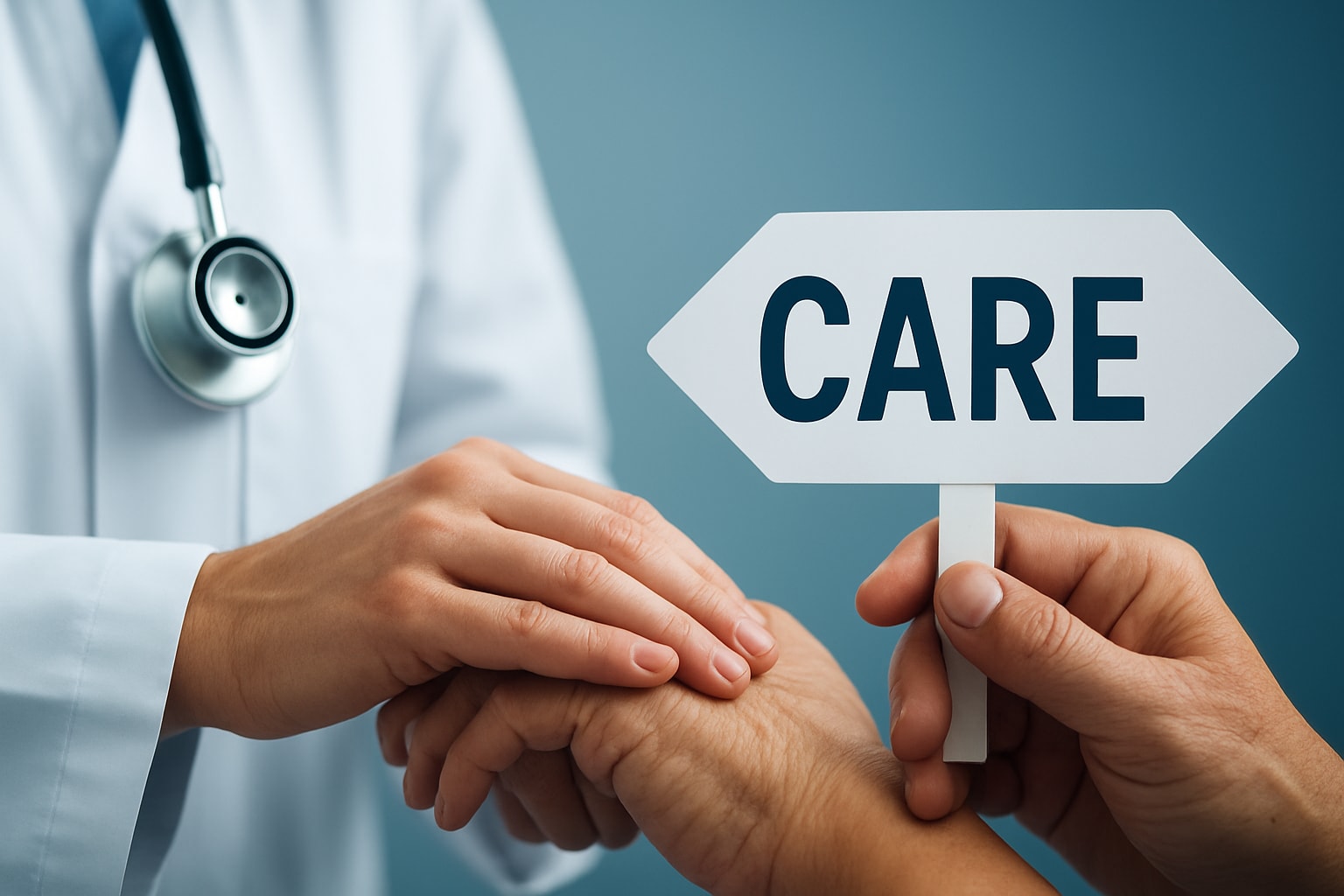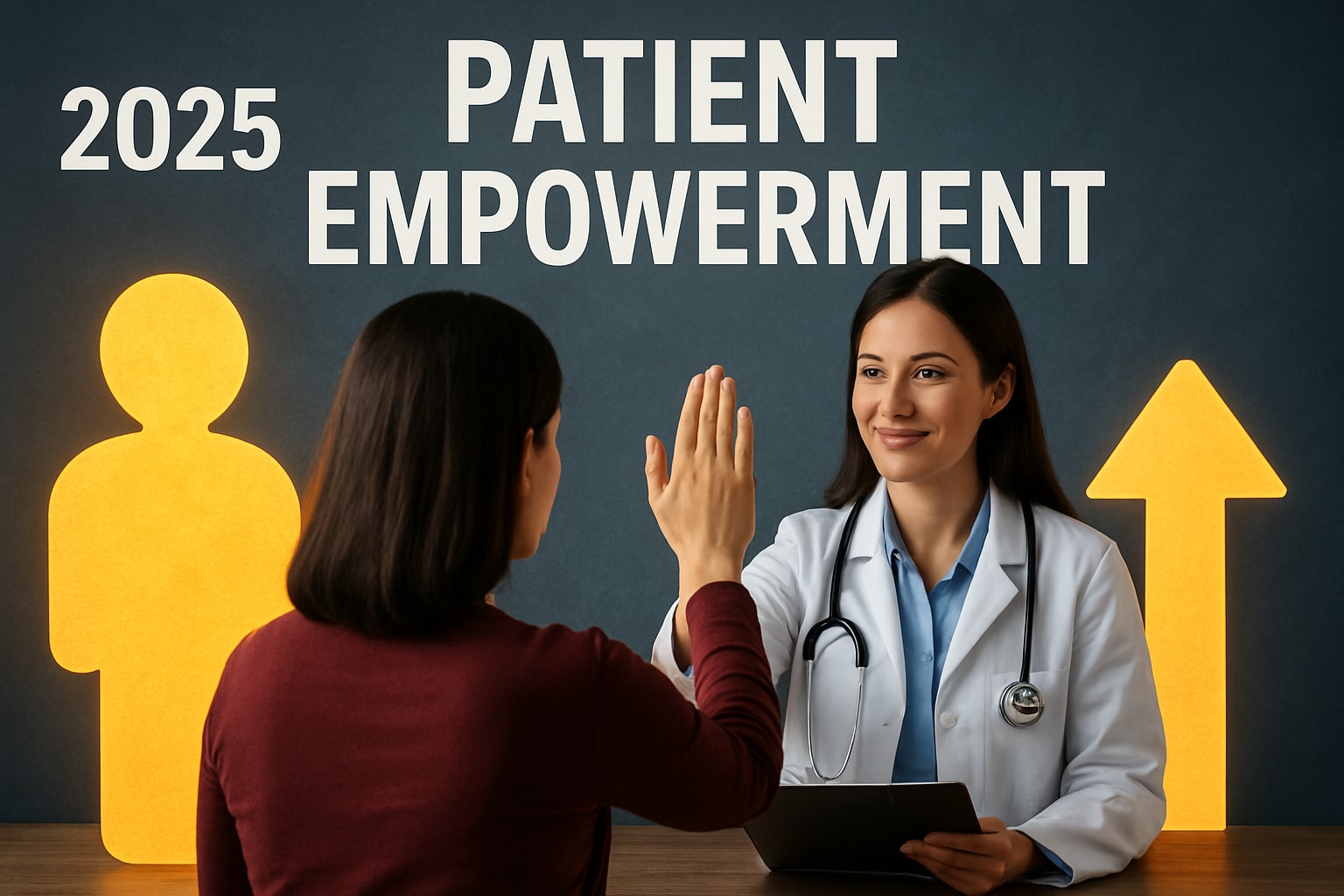In 2025, clinical care stands at a crossroads, with rapid changes reshaping the healthcare landscape. Professionals face mounting demands to deliver safer, more effective outcomes.
This Clinical Care Guide 2025 provides expert-backed strategies to help you adapt, optimize patient experiences, and maintain regulatory compliance. Inside, you will discover practical, evidence-based solutions for integrating technology, improving workflows, and building strong interdisciplinary teams.
The urgency to evolve has never been greater. Equip yourself with proven approaches that empower you to thrive in modern clinical care.
The Evolving Landscape of Clinical Care in 2025
As we move into 2025, the landscape of clinical care is shifting rapidly. Healthcare professionals face new challenges, from changing patient demographics to the rise of digital health tools. Understanding these changes is essential for clinicians aiming to deliver high-quality clinical care and remain compliant in a dynamic environment.

Key Trends and Drivers Shaping Clinical Practice
The year 2025 brings several significant trends that are redefining clinical care. Aging populations and a global rise in chronic diseases are increasing the demand for healthcare services. According to the WHO, chronic diseases will account for 73% of all deaths globally by 2025.
Patients now expect more personalized and accessible clinical care. There is a strong shift toward value-based models, focusing on outcomes rather than volume. Telehealth has expanded, enabling remote consultations and continuous monitoring. For example, many hospitals are adopting remote patient monitoring programs to reduce readmissions.
Healthcare organizations are also prioritizing integrated care models and interdisciplinary teamwork, as highlighted in Top health care trends of 2025. These approaches support better patient outcomes and satisfaction.
Regulatory and Policy Changes
Regulatory updates are shaping how clinical care is delivered. In 2025, major changes to HIPAA and GDPR are strengthening patient privacy protections. New CMS reimbursement models are incentivizing digital health services, making it easier for clinicians to adopt telemedicine and remote monitoring.
Accreditation bodies are raising standards for care quality and safety. For example, recent CMS rules now reward integrated care teams that improve coordination and patient outcomes. Staying current with these regulations is essential for clinical care compliance and reimbursement.
Technology and Digital Transformation
Technology continues to transform clinical care in 2025. Artificial intelligence is being used to enhance diagnostics and streamline workflows. AI-powered triage systems are helping reduce emergency room wait times by quickly assessing patient needs.
Electronic Health Record (EHR) interoperability has improved, allowing seamless data exchange across providers. Wearable devices and patient self-tracking tools are now part of routine care. According to HealthIT.gov, 92% of US hospitals use certified EHRs, demonstrating the widespread adoption of digital solutions in clinical care.
Patient-Centered and Culturally Competent Care
Patient-centered clinical care is now the standard. Clinicians are emphasizing shared decision-making and creating individualized care plans. Addressing social determinants of health is crucial for improving outcomes, especially in underserved populations.
Cultural competency training has become a requirement for many organizations. Clinics are implementing language access services and providing materials in multiple languages to support diverse patient populations. These efforts ensure clinical care is both equitable and effective.
Workforce Challenges and Solutions
Workforce issues remain a central concern for clinical care delivery in 2025. Clinician burnout and staffing shortages impact care quality and access. Nearly 46% of nurses report symptoms of burnout.
Healthcare organizations are responding by upskilling staff, adopting interdisciplinary team models, and offering flexible scheduling. Remote work options for administrative and some clinical roles are also becoming more common. These strategies help maintain a resilient clinical care workforce ready to face future challenges.
Step-by-Step Strategies for Effective Clinical Care Delivery
Delivering high-quality clinical care in 2025 requires a systematic approach that adapts to rapid changes and patient needs. The following step-by-step strategies are designed to help healthcare teams achieve optimal outcomes, improve efficiency, and maintain compliance in every aspect of care.

Step 1: Comprehensive Patient Assessment
A thorough patient assessment is the cornerstone of effective clinical care. Teams begin by using standardized tools such as the PHQ 9 for mental health screening or the Braden Scale for pressure injury risk. These tools ensure consistency and accuracy in identifying patient needs.
Integrating social determinants of health (SDOH) into intake processes is increasingly important. Digital intake forms now enable real-time collection of SDOH data, allowing clinicians to address factors like housing instability or food insecurity from the outset.
Medication reconciliation is another critical component. Reviewing all medications, including over the counter drugs and supplements, helps prevent adverse events and ensures patient safety.
Key assessment tools:
- PHQ 9 (depression)
- Braden Scale (pressure injury)
- SDOH screening checklists
By prioritizing a holistic assessment, clinical care teams gain a clear understanding of each patient's unique profile and risks.
Step 2: Collaborative Care Planning
Once assessment is complete, collaborative care planning brings together interdisciplinary expertise. Regular team meetings and case conferences promote shared understanding and joint decision making. Including patients and families in goal setting ensures that care plans reflect personal values and preferences.
For complex cases, care coordinators streamline communication and manage transitions between settings. Multidisciplinary rounds have proven effective in improving discharge planning and reducing readmissions.
For more insights on enhancing teamwork and integrated approaches, see Integrated healthcare best practices.
Key team members:
- Physicians
- Nurses
- Pharmacists
- Social workers
- Care coordinators
Collaborative planning fosters a proactive approach to clinical care, reducing errors and enhancing patient satisfaction.
Step 3: Evidence-Based Intervention Implementation
Implementing interventions based on the latest clinical guidelines is essential for safe and effective clinical care. Clinicians should regularly consult resources from the CDC, NICE, and WHO to stay current with evidence-based recommendations.
Clinical decision support tools embedded in EHRs can guide intervention choices and alert providers to best practices. For example, sepsis protocols built into electronic records have reduced mortality rates by 20 percent in leading hospitals.
Adapt interventions to each patient's preferences, cultural background, and literacy level. This customization ensures treatments are both effective and acceptable to patients.
By focusing on evidence and personalization, clinical care teams deliver interventions that achieve measurable results.
Step 4: Technology Integration and Data Utilization
Integrating technology into clinical care streamlines workflows and elevates patient outcomes. Maximizing EHR features, such as automated alerts and customizable templates, boosts efficiency and compliance with documentation standards.
Telemedicine is now a mainstay for follow ups and chronic disease management. Remote monitoring devices, like Bluetooth enabled glucose meters, help patients manage conditions such as diabetes and reduce hospitalizations.
Data analytics play a growing role in population health management. Dashboards allow teams to stratify patient risk and target interventions for high need groups.
Harnessing digital tools empowers clinical care professionals to deliver more responsive and coordinated care.
Step 5: Continuous Evaluation and Quality Improvement
Continuous evaluation is vital for sustaining excellence in clinical care. Teams use outcome measures such as Patient Reported Outcome Measures (PROMs) and Patient Reported Experience Measures (PREMs) to track progress over time.
Root cause analysis is essential for understanding adverse events and preventing recurrence. Quality improvement initiatives often use the Plan Do Study Act (PDSA) cycle to test and refine changes.
A sample table for quality improvement methods:
| Method | Purpose | Example Outcome |
|---|---|---|
| PROMs/PREMs | Measure results | Higher satisfaction |
| PDSA cycles | Test process changes | Reduced errors |
| Root cause analysis | Investigate incidents | Fewer adverse events |
Benchmarking against national standards motivates teams to continually raise their performance. Recent projects have shown that focused quality improvement can boost patient satisfaction scores by 15 percent.
By embedding evaluation and adaptation in daily routines, clinical care teams remain agile and future ready.
Essential Skills and Competencies for Clinical Success
Mastering essential skills and competencies is the cornerstone of effective clinical care. In 2025, clinicians must go beyond technical expertise, embracing a holistic approach to patient interactions, problem-solving, teamwork, and cultural sensitivity. These capabilities directly impact patient outcomes, safety, and satisfaction in clinical care settings.

Clinical Communication and Patient Engagement
Effective communication is a vital skill in clinical care, shaping trust and rapport between clinicians and patients. Motivational interviewing helps uncover patient motivations and barriers, supporting behavior change. When delivering difficult news, clinicians must use empathy and clarity.
Role-playing scenarios during staff training can improve communication proficiency and confidence. Studies show that strong communication within clinical care teams is associated with a 30 percent reduction in malpractice claims.
Key strategies include:
- Using open-ended questions to encourage patient dialogue
- Practicing active listening for better understanding
- Employing teach-back methods to confirm comprehension
By prioritizing patient engagement, clinical care providers foster shared decision-making and improved satisfaction.
Critical Thinking and Clinical Judgment
Rapid assessment and sound judgment are pivotal in clinical care, especially when managing complex or acute cases. Simulation-based training allows clinicians to practice decision-making under pressure, refining their response to emergencies.
Applying current evidence to each unique patient scenario ensures interventions are both effective and safe. To reduce decision fatigue, clinicians should use checklists and clinical algorithms.
Essential practices include:
- Prioritizing issues during triage
- Integrating new research into daily routines
- Debriefing after critical incidents to enhance learning
These skills help clinical care professionals deliver safe, timely care in fast-paced environments.
Interdisciplinary Teamwork and Leadership
Collaboration is fundamental for high-quality clinical care. Clearly defined roles, regular team huddles, and open communication channels enable effective coordination. The TeamSTEPPS program, for example, has improved care coordination and team performance in many organizations.
Strong leadership within clinical care teams encourages accountability, innovation, and professional growth. Conflict resolution and collaborative problem-solving are also key to maintaining a positive work environment.
Best practices for teamwork:
- Holding interdisciplinary rounds for comprehensive care planning
- Encouraging feedback and shared learning
- Supporting leadership development through mentorship and training
These approaches build resilient clinical care teams equipped for complex challenges.
Cultural Competency and Health Literacy
Delivering equitable clinical care requires cultural awareness and a commitment to addressing health literacy. Assessing patient understanding and providing educational materials in multiple languages are now standard practices.
Clinics that offer health education in the top five local languages can bridge communication gaps and improve outcomes. Low health literacy is linked to 50 percent higher hospitalization rates, underscoring the need for accessible information.
To further support clinicians, the Patient care resource collection offers easy-to-understand materials on essential patient care topics, enhancing compliance and engagement for diverse populations.
By integrating cultural competency and health literacy into clinical care, providers empower patients and reduce disparities.
Harnessing Technology for Enhanced Clinical Outcomes
In 2025, technology stands at the heart of clinical care transformation. Modern healthcare teams rely on digital solutions to enhance patient outcomes, optimize efficiency, and meet evolving expectations. From artificial intelligence to telemedicine, innovative tools are redefining every stage of clinical care.
Digital Health Tools and Telemedicine
Digital health tools have rapidly become essential in clinical care delivery. Telemedicine platforms allow clinicians to connect with patients remotely, making healthcare more accessible and reducing missed appointments by 25%. Virtual consultations are particularly effective for chronic disease management and follow-up care.
To ensure success, teams must prioritize data security and patient privacy during virtual visits. Integrating remote monitoring devices, such as blood pressure cuffs and glucose meters, enables continuous tracking and early intervention. These devices feed real-time data directly into electronic records, supporting proactive clinical care.
Best practices for telemedicine:
- Verify patient identity and consent at each session.
- Use secure platforms compliant with HIPAA and GDPR.
- Provide clear instructions for device use and troubleshooting.
By embracing digital health tools, providers deliver more flexible and responsive clinical care.
Artificial Intelligence and Clinical Decision Support
Artificial intelligence is revolutionizing clinical care by enhancing decision-making and automating routine tasks. AI-driven risk prediction tools flag high-risk patients early, allowing timely intervention. For example, algorithms can identify early signs of sepsis, improving survival rates.
Clinical decision support systems embedded in EHRs suggest evidence-based interventions and alert staff to potential medication interactions. Automating documentation tasks reduces administrative burden, freeing clinicians to focus on patient care.
However, transparency and bias in AI systems must be addressed. Regular audits, diverse data sets, and clinician oversight help ensure safe and equitable clinical care. According to the 2025 global health care outlook, integrating AI effectively requires ongoing staff training and robust governance.
Data Analytics and Population Health Management
Data analytics tools are now central to clinical care strategy. Dashboards visualize key performance metrics, helping teams monitor trends and address gaps. By stratifying patient risk, clinicians can target interventions to those who need them most.
Analytics-driven outreach programs have increased vaccination rates and improved medication adherence. These tools support population health management, reducing disparities and improving outcomes across communities.
Common analytics applications:
- Tracking chronic disease indicators
- Identifying care gaps in at-risk populations
- Benchmarking performance against national standards
Despite these advances, interoperability challenges remain. Seamless data sharing between systems is vital for coordinated clinical care and comprehensive patient records.
EHR Optimization and Workflow Automation
Optimizing EHR systems is crucial for efficient clinical care. Customizing templates and order sets streamlines documentation, reducing time spent on repetitive tasks. Automated reminders prompt clinicians to order preventive screenings and follow up on abnormal results.
Workflow automation tools also help distribute workload evenly, minimizing burnout. Training staff on new functionalities ensures all team members can leverage EHR improvements for better patient care.
A table summarizing EHR optimization benefits:
| Benefit | Impact on Clinical Care |
|---|---|
| Custom templates | Faster, more accurate notes |
| Automated reminders | Increased preventive screenings |
| Workflow automation | Lower administrative burden |
| Ongoing staff training | Consistent, high-quality care |
By harnessing technology, healthcare organizations build resilient, adaptive clinical care processes, setting the stage for ongoing improvement and innovation.
Patient Education, Empowerment, and Compliance
Empowering patients through education is a cornerstone of clinical care in 2025. As healthcare becomes more complex, effective patient engagement is essential for improving outcomes, reducing readmissions, and ensuring compliance. By prioritizing clear communication and leveraging modern resources, clinical care teams can foster meaningful patient partnerships.
Best Practices in Patient Education
Clear, accessible education is vital in clinical care. Using plain language, visual aids, and interactive methods ensures patients understand their conditions and treatments. For instance, digital guides and short videos can make medication instructions memorable.
Clinicians should assess understanding with teach-back techniques, asking patients to repeat information in their own words. This approach confirms comprehension and uncovers gaps early.
A table comparing education methods:
| Method | Benefit |
|---|---|
| Teach-back | Ensures understanding |
| Visual Aids | Increases retention |
| Digital Guides | Accessible anytime |
Research shows 80% of patients retain more information through multimedia education, making these strategies crucial for clinical care success.
Tools and Resources for Empowerment
Modern clinical care leverages technology to empower patients in self-management. Mobile apps let individuals track symptoms, manage medications, and access educational resources on demand. Patient portals provide secure communication channels and personalized care plans.
Support groups and community resources offer encouragement and practical advice. For example, diabetes education apps have improved glycemic control by enabling patients to log glucose levels and receive instant feedback.
Personalized checklists and reminders help patients stay on top of their care routines. These tools make clinical care more collaborative and responsive to individual needs.
Improving Adherence and Reducing Readmissions
Adherence to care plans is a persistent challenge in clinical care. Motivational interviewing helps patients set realistic goals and overcome barriers, such as cost or transportation.
Medication synchronization and digital reminders enhance consistency. Pharmacist-led interventions have reduced readmissions by 12%, highlighting the value of interdisciplinary support.
Barriers like literacy and affordability must be addressed with tailored solutions. Nonadherence costs US healthcare $100 billion annually, underscoring the need for proactive strategies. Follow-up calls and telehealth visits further support compliance and continuity in clinical care.
Mediscript: Trusted Health Education Resources for Clinical Teams
Mediscript offers evidence-based guides and ebooks designed to support clinical care teams in patient education and compliance. These materials are widely used in clinics, pharmacies, and educational settings to improve outcomes and empower patients.

With customizable content covering topics from chronic disease to medication safety, Mediscript enables instant access and seamless integration into existing workflows. For organizations seeking tailored solutions, Licensing digital patient education materials provides flexible options to enhance patient engagement.
Healthcare professionals worldwide praise Mediscript for its clarity, impact, and contribution to effective clinical care.
Staying Ahead: Continuous Professional Development and Future-Proofing Your Practice
In 2025, the pace of change in clinical care is accelerating, making continuous professional development essential for every healthcare provider. Staying proactive is no longer optional for clinicians who aim to deliver the highest standards of care and adapt to shifting healthcare landscapes.
Lifelong Learning and Certification
Lifelong learning is at the heart of clinical care excellence. Regularly updating your skills through CME and CEU credits ensures you remain current with evolving guidelines and technologies. Online learning platforms make it easier than ever to access microlearning modules that fit into busy schedules.
Simulation labs offer hands-on practice, allowing clinicians to refresh their skills and improve patient safety. For example, many hospitals now require annual training on new protocols and devices. According to recent studies, clinicians who prioritize ongoing education report higher confidence and improved clinical care outcomes.
Staying informed on Health Care Trends to Watch in 2025 can help guide your professional development goals. Consider setting annual learning objectives and tracking your progress to ensure you are always ready for new challenges.
Embracing Change and Innovation
Adapting to new care models and technology is vital for future-proofing your clinical care practice. The adoption of telehealth, AI-powered diagnostics, and remote patient monitoring is transforming daily workflows and patient engagement.
Participating in pilot programs or research initiatives exposes clinicians to innovative tools and methodologies before they become mainstream. For instance, early adoption of remote monitoring in primary care has led to measurable improvements in outcomes and efficiency.
Building resilience in clinical teams means fostering a culture open to experimentation and feedback. According to Healthcare Trends 2025, the rise in value-based care and urgent care services will further drive innovation. Keeping a flexible mindset ensures your clinical care practice remains agile and effective.
- Join pilot projects for new technologies
- Regularly review and update care protocols
- Encourage team feedback on process improvements
Networking and Professional Collaboration
Strong professional networks are a cornerstone of success in clinical care. Engaging with professional associations, online forums, and attending conferences provides opportunities to exchange ideas and stay updated on best practices.
Interdisciplinary grand rounds and workshops foster collaboration across specialties, enhancing the quality of patient care. Mentorship programs and peer support systems offer guidance for career growth and help clinicians navigate complex clinical situations.
Building these connections not only enriches knowledge but also provides a support system during times of change. As clinical care continues to evolve, being part of a vibrant professional community ensures you stay informed, resilient, and ready to deliver exceptional care.






